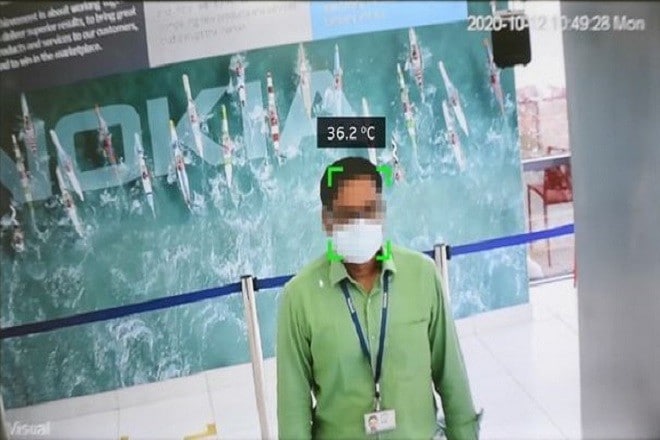
The automated analytics solution is capable of detecting high temperatures and mask compliance in large gatherings or at workplaces

To help spot potential COVID-19 infections in facilities with thousands of people, an automated, zero-touch elevated temperature detection solution designed and introduced by Nokia.
The Nokia Automated Analytics Solution for Access Control fully automates the process of identifying people with elevated temperatures and confirms mask compliance, in large environments with multiple accesses.
Leveraging advanced analytics, a business rules engine, centralised management, machine learning and ubiquitous connectivity, the solution dramatically reduces the cost of detection and ensures business continuity and supply chain resilience. Organizations can also expand the solution to support other ongoing use cases to protect employees and building assets, including predictive surveillance, machine maintenance and security threats.
“Whether in factories, ports, offices, airports, schools or outdoor screening centres, mission-critical networks and digital automation solutions play a leading role in ensuring supply resilience, business continuity, and workers’ safety in real-time. The Nokia Automated Analytics Solution brings centralised data, analytics and an automation management system, allowing large organisations to make intelligent decisions to protect their people and facilities during and in a post-pandemic world while respecting individual privacy,” said Amit Shah, head of Analytics and IoT for Nokia.
Centralised Screening
The technology uses an open architecture and has a rich suite of analytics with a flexible set of automation workflows and rules to adapt the solution to each enterprise’s needs.
A thermal camera captures video footage and takes individual temperature readings (accurate to +/- 0.3 degrees Celsius) for every person that enters the screening site. The analytics engine quickly processes the video clip to determine whether the individuals require additional screening, or are not complying with mask-wearing rules.
Through its centralised management approach, the solution triggers an institution’s chosen operational workflow. If an irregularity is detected, a centralised, enterprise-wide view is presented and a real-time SMS or email alert is automatically sent to the personnel in the field to initiate track-and-trace or post-detection actions. The entire process takes place in near-real time and the human-less operation enables scaling to very large environments with thousands of people and multiple access points.
“The Nokia Automated Analytics Solution for Access Control is a great example of the important role that network infrastructure vendors can play in fighting the spread of a global pandemic, such as Covid-19. Furthermore, the modular architecture allows easy re-purposing of the solution to use cases such as port or smart city traffic monitoring and therefore to address the ever-increasing demand for automated data analytics capabilities, which will continue to rise in line with further enterprise digitalisation,” said Leo Gergs, ABI Research, Research Analyst.
As of now, the solution has been successfully deployed at multiple locations for monitoring employee safety. There are plans to deploy the solution for enterprise customers across multiple industry segments.
Once concerns about COVID-19 subside, organisations can re-purpose the solution to support other use cases to protect employees, site visitors and facilities, including predictive surveillance and machine maintenance, security threats and anomaly detection, and customized industry-specific analytics.










